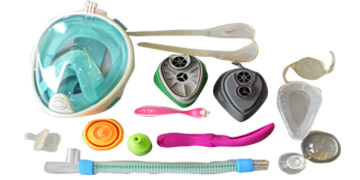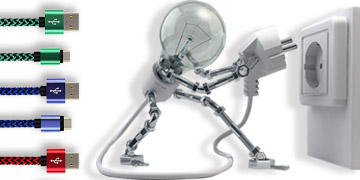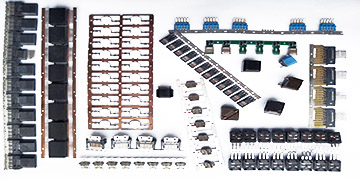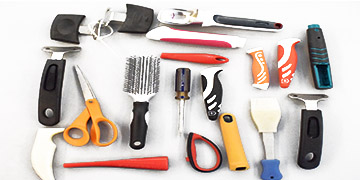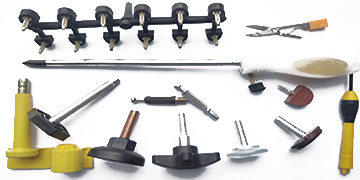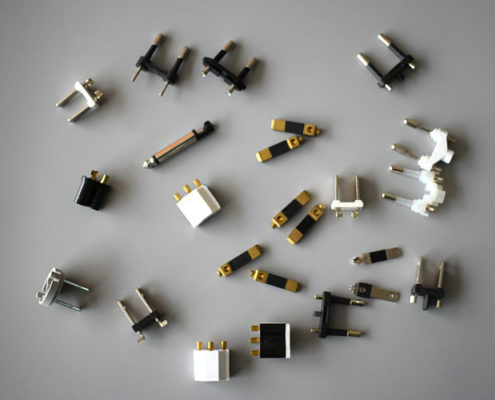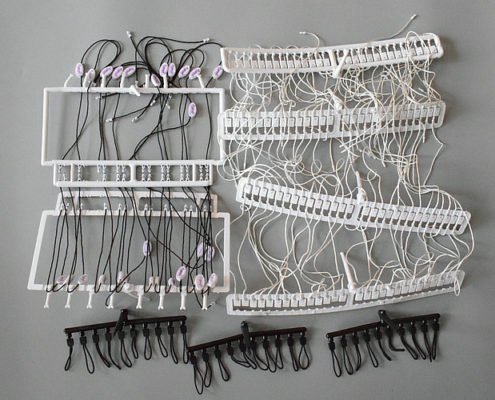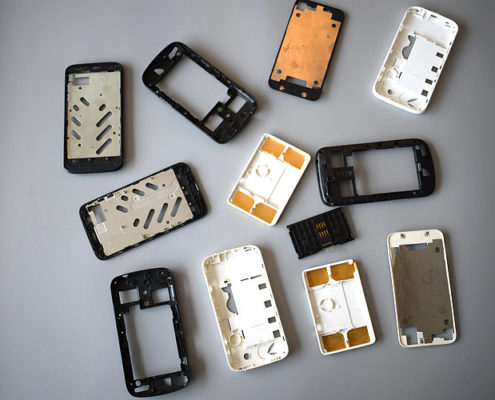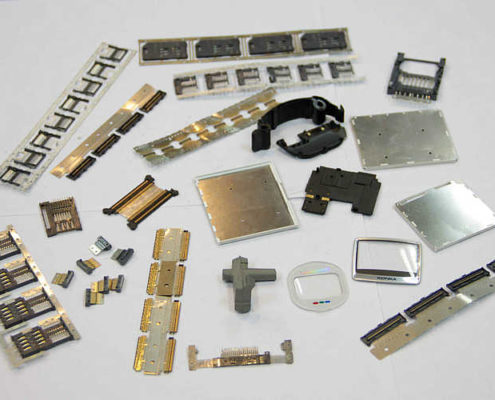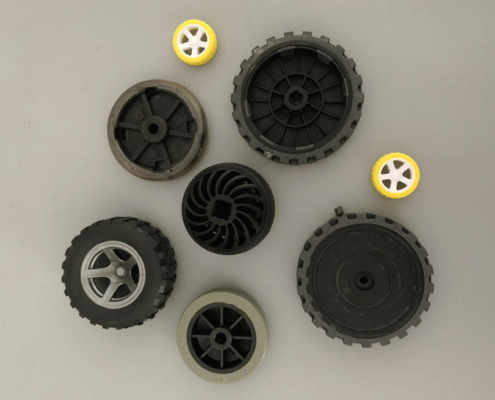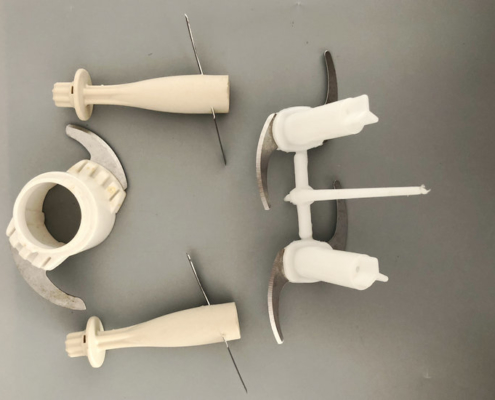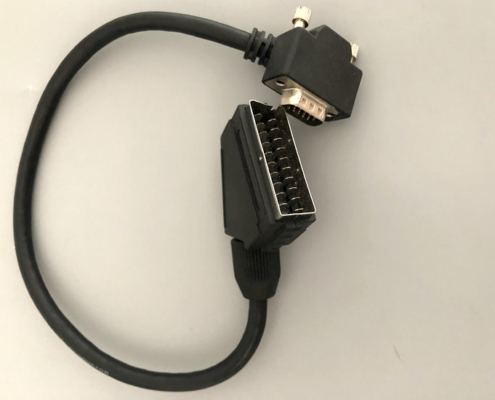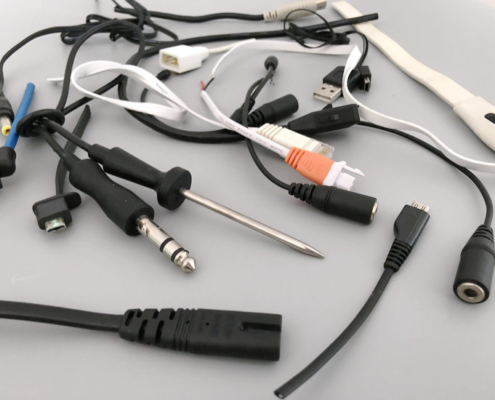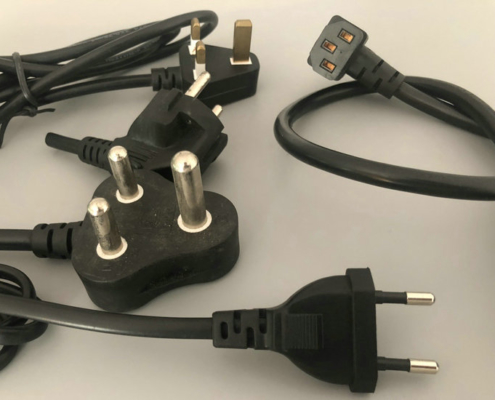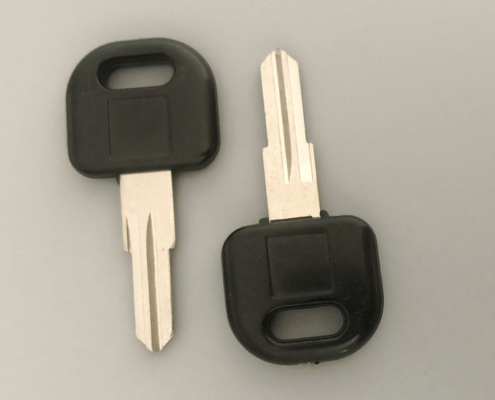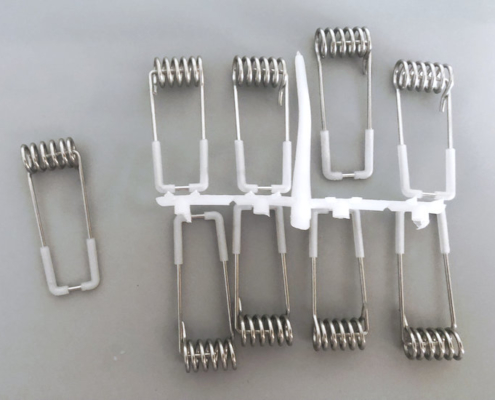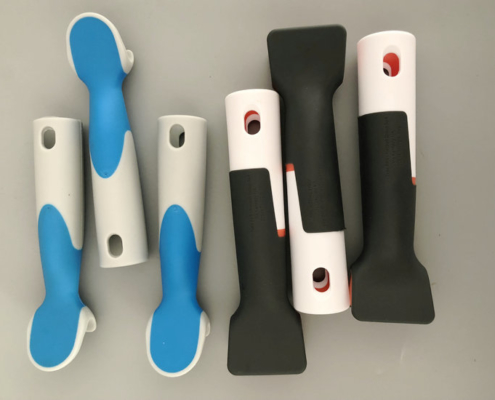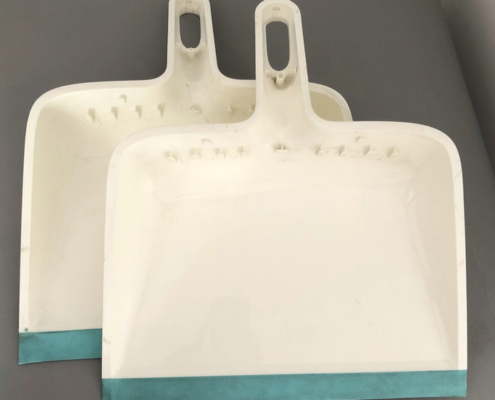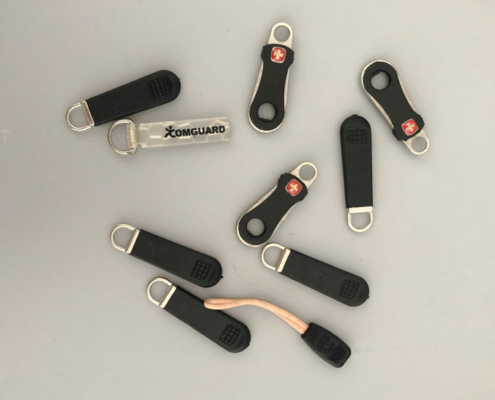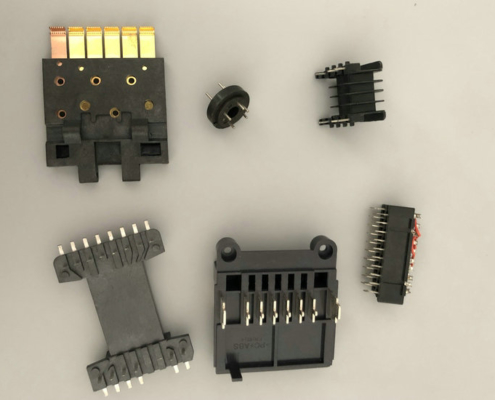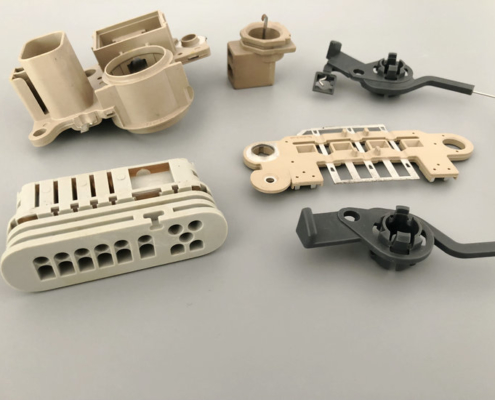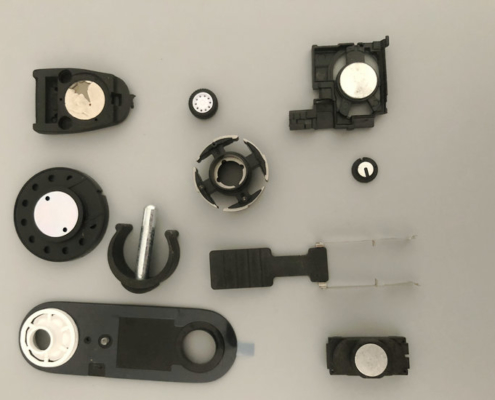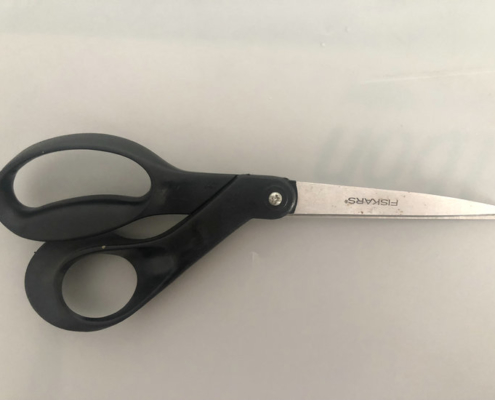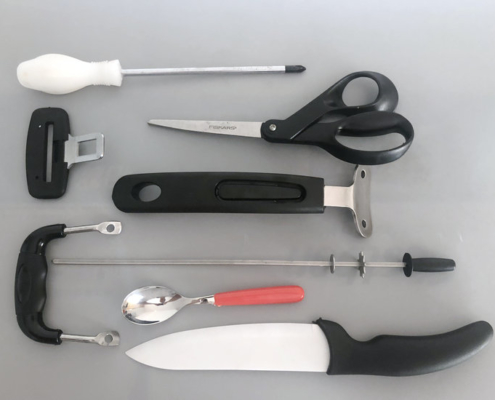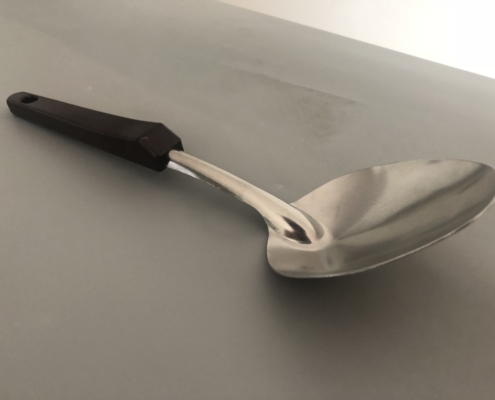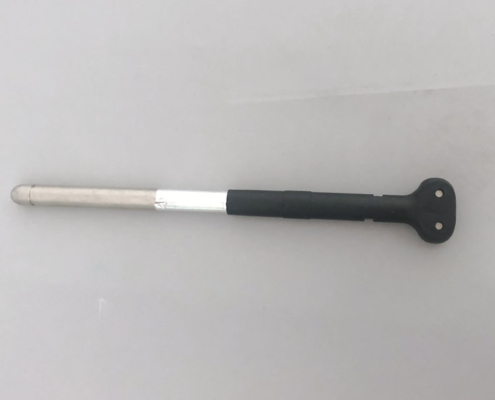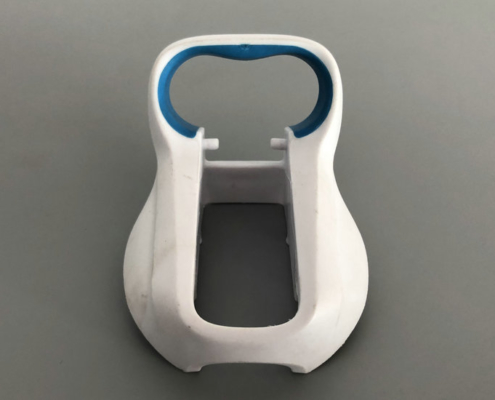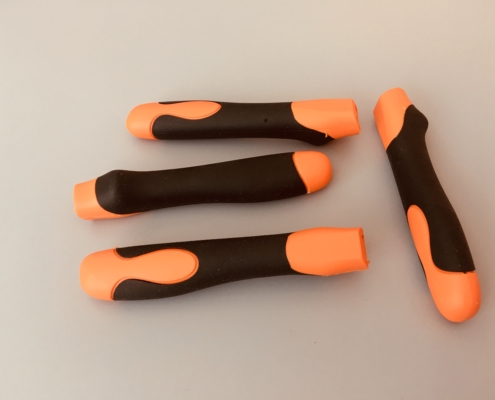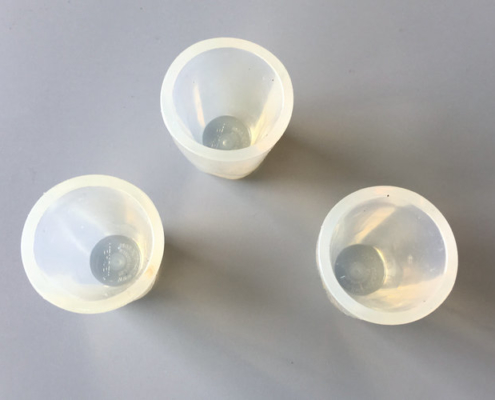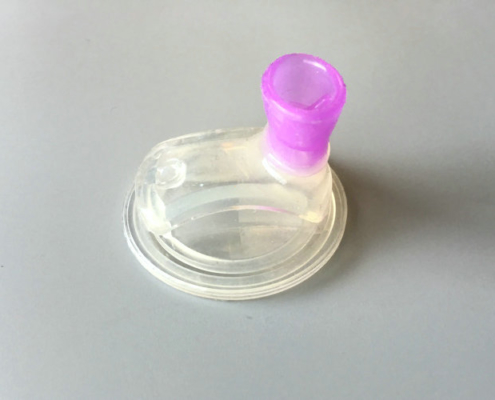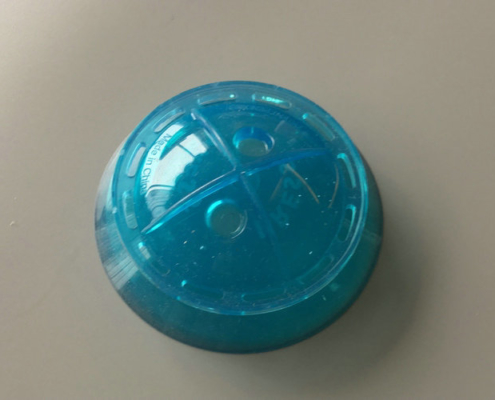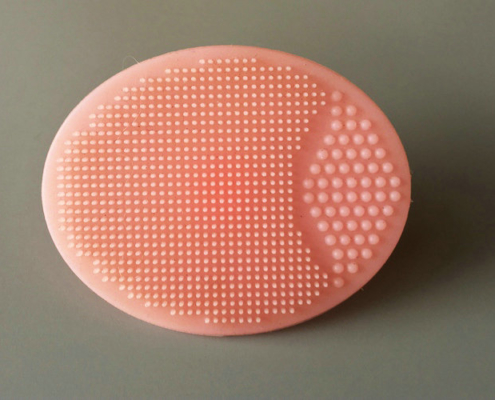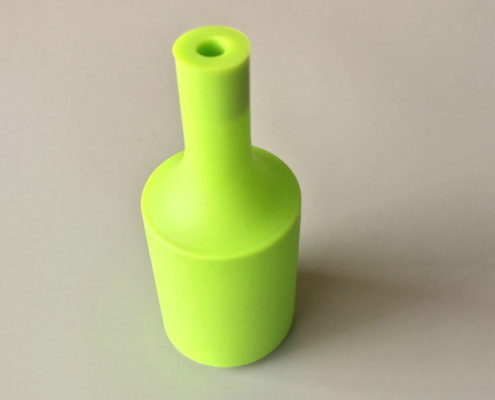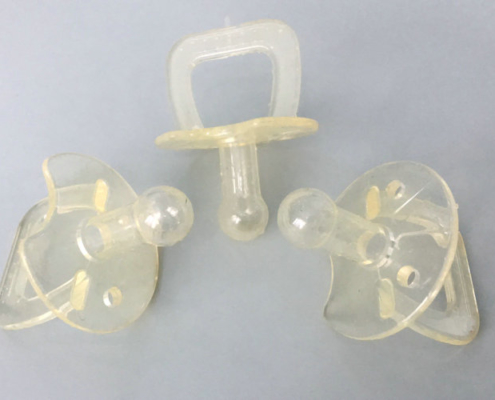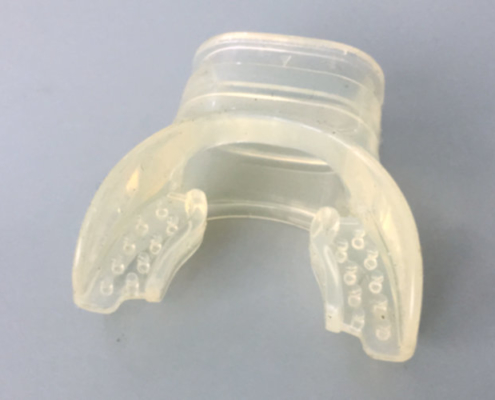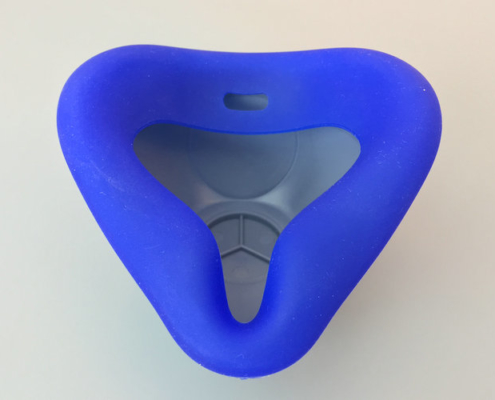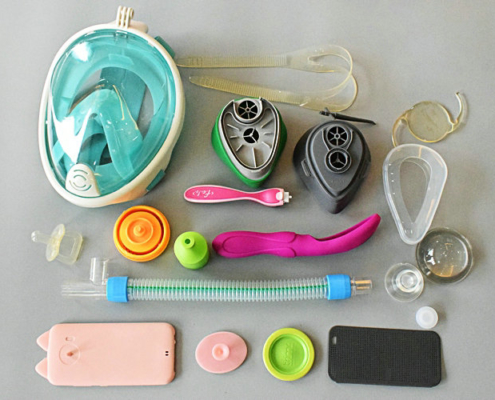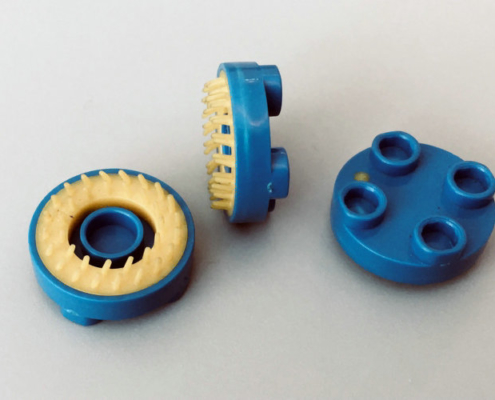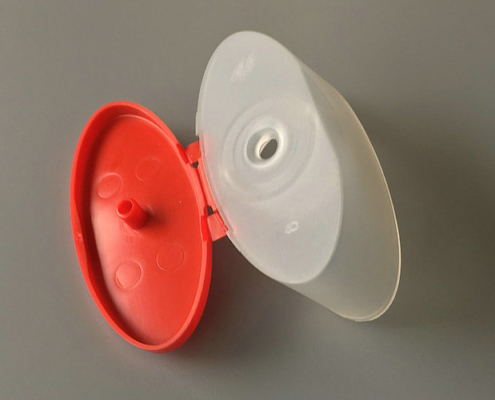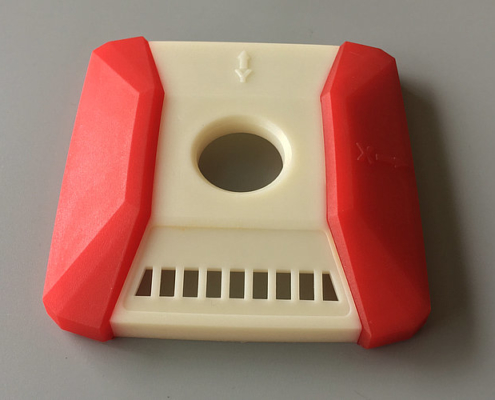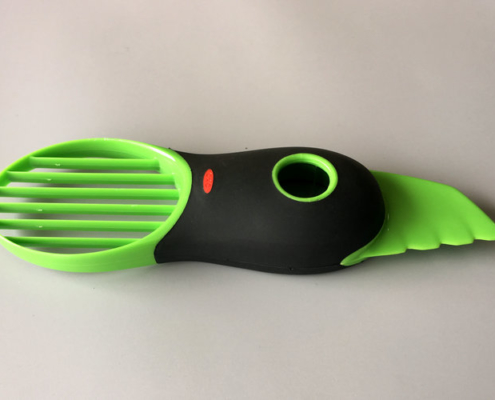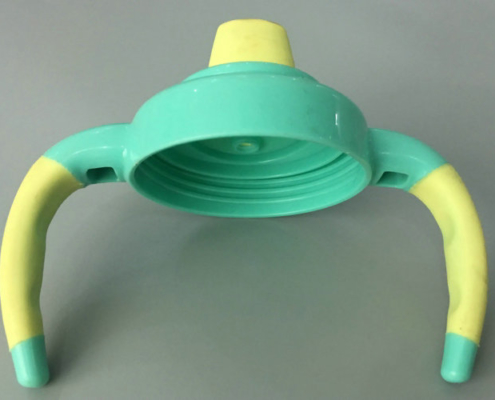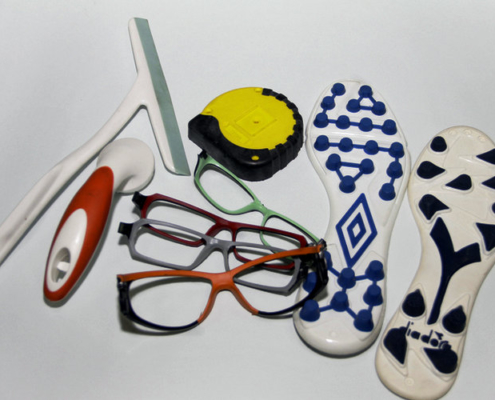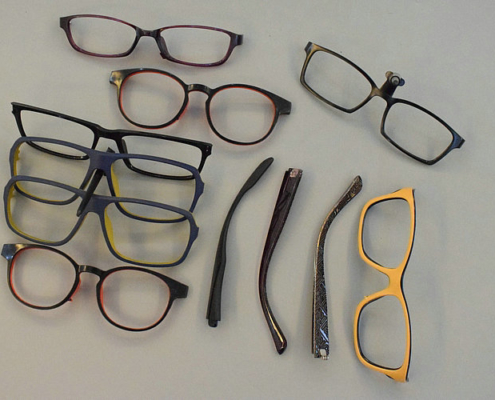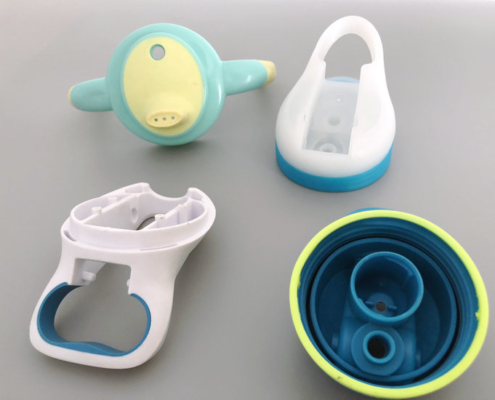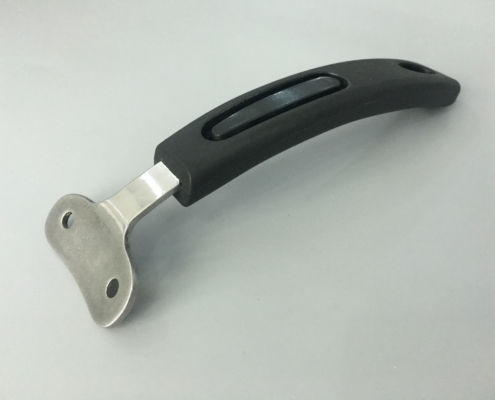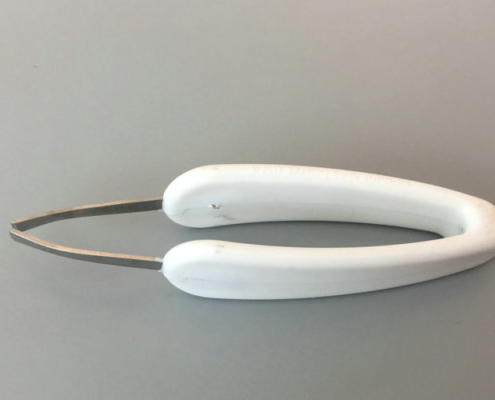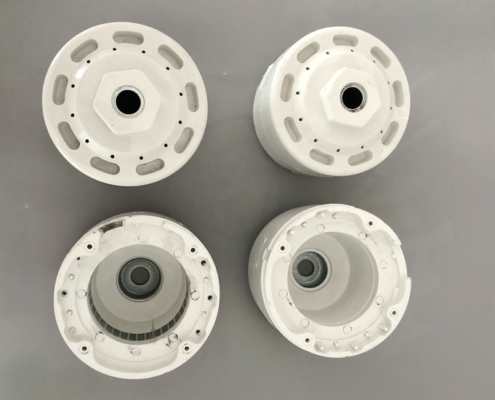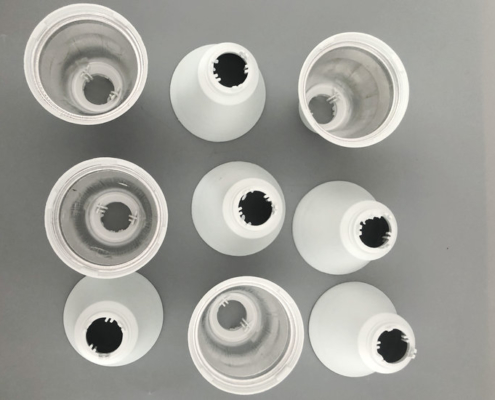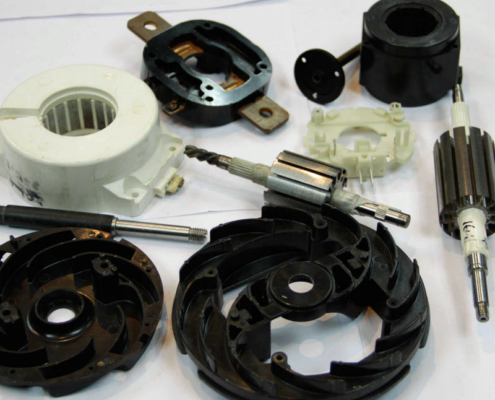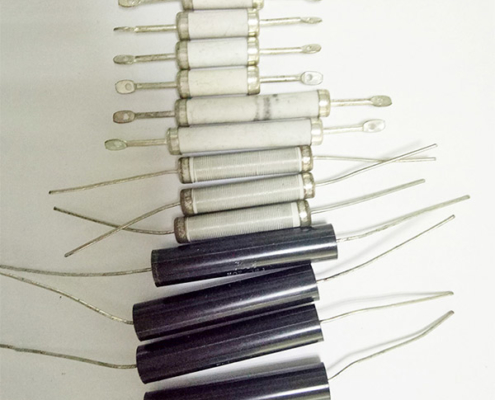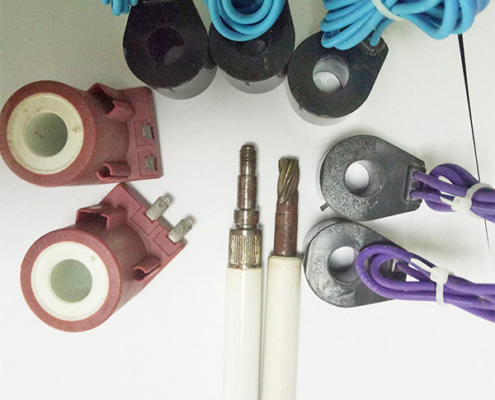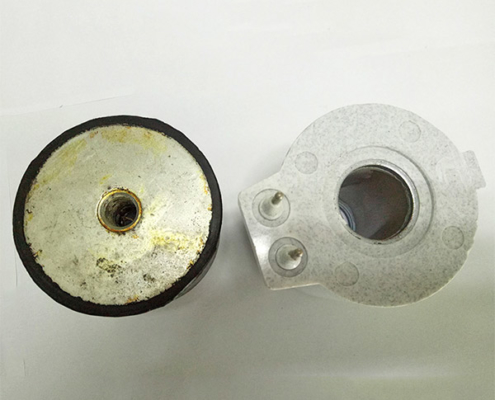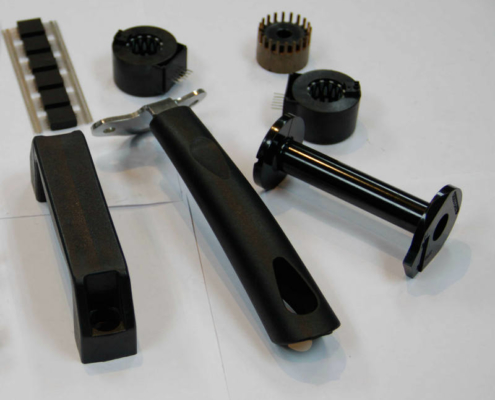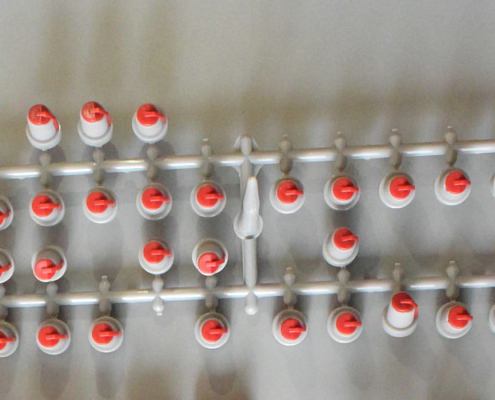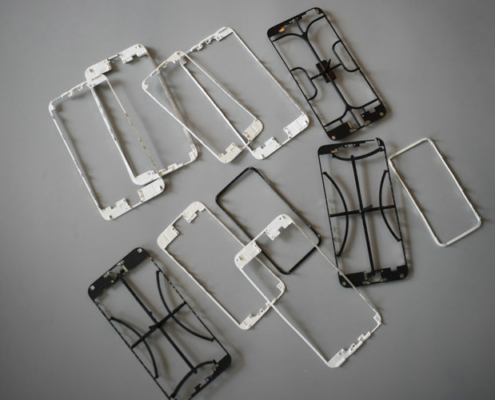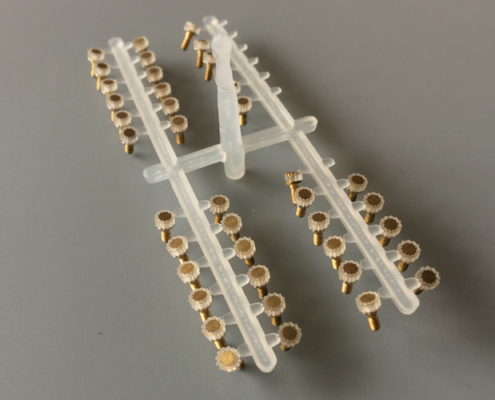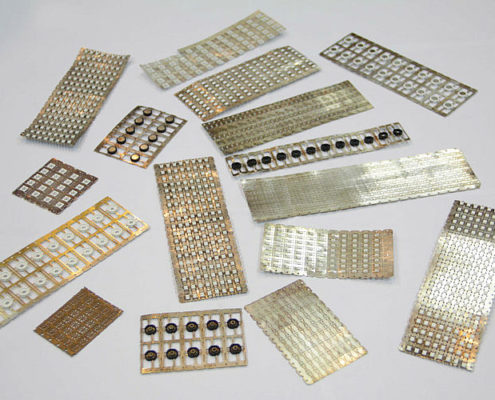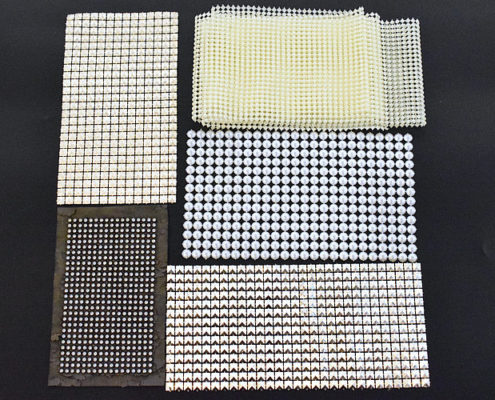TAIWANG provides technical injection molding applications such as: insert molding, multi-component (or multi-color) molding, thermoset injection molding (for BMC and rubber), liquid injection molding (for LSR), powder injection molding (for metal and ceramic), in-mould-decoration molding , and micro injection molding etc.
2.Thermoset Injection Molding
Thermoset injection molding process begins by adding granular or pelletized material to a hopper. Material is gravity fed into a barrel and screw, which heats and moves the material toward the mold. Material is then injected into a heated mold through a runner system to reach all the cavities under high pressure. When the mold cavities are adequately filled, the parts cure to a solid form. The mold then opens for part removal, and some parts simply drop into a box, while others are removed by hand or automatic take-out equipment.Thermoset is processing of material chemical changes,that means processing is irreversible.
3.Liquid Injection Moulding
Injection molding of liquid silicone rubber (LSR) is a process to produce pliable and durable parts in high production volume. LSR is a high purity cured silicone with low compression, great stability and ability to resist extreme high and low temperatures. Due to its thermosetting nature, LSR molding requires special treatment before it is purged into the heated cavity and vulcanized. Typical applications for LSR are products that require high precision such as: seals, sealing membranes, electric connectors, multi-pin connectors, infant products where smooth surfaces are desired such as feeding bottle nipples, and medical applications as well as kitchen appliances such as baking pans, and spatulas, etc.
4.Multi-component (or Multi-color) Molding
Multi-component molding is the composition of two or more different components into one plastic part to achieve a specific function by means of the injection process. The specific functions can be either hard or soft combination of PP and TPE, core/skin combination, and multi-color design etc. The mold can rotate, shuttle or swivel to bring the cavity into the filling position for each component.
5.Powder Injection Moulding
Powder injection molding (PIM) is a manufacturing solution for producing intricate parts in medium to high volumes (10,000 to over 2,000,000 parts annually) using fine (<20 μm) metal or ceramic powders. PIM is well suited for parts weighing from 0.1 to 250 gm. Cross sections are typically less than 6.35 mm and tolerances can be within the order of ±0.3 to 0.5%. PIM is capable of transforming complex design concepts into high precision products using a wide range of raw materials such as carbon steels, low alloy steels, stainless steels, low expansion alloys, tool steels, soft magnetic alloys, super alloys, conductive materials (e.g. copper), and ceramics.
6.Micro Injection Moulding
It has been proven that a smaller parts molded by a standard molding machines has a limited success. Micro injection molding is about a processing technology using extremely high pressure and speed in producing very small (<1 gram) and accurate molded parts. Micro injection molding is widely suited for most of raw materials ranging from high-temperature resistant engineering plastics to commodity resins. [/av_textblock] [/av_one_half][/av_section][av_section min_height='' min_height_px='500px' padding='default' shadow='no-shadow' bottom_border='no-border-styling' bottom_border_diagonal_color='#333333' bottom_border_diagonal_direction='' bottom_border_style='' custom_arrow_bg='' id='contact' color='main_color' custom_bg='' src='' attachment='' attachment_size='' attach='scroll' position='top left' repeat='no-repeat' video='' video_ratio='16:9' overlay_opacity='0.5' overlay_color='' overlay_pattern='' overlay_custom_pattern='' av_element_hidden_in_editor='0' custom_class='' av_uid='av-693f70'] [av_textblock size='' font_color='' color='' av-medium-font-size='' av-small-font-size='' av-mini-font-size='' custom_class='' admin_preview_bg='' av_uid='av-4e4dcs']




